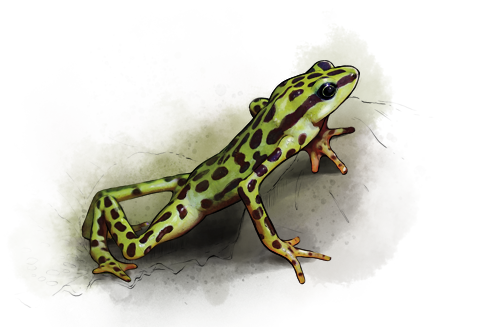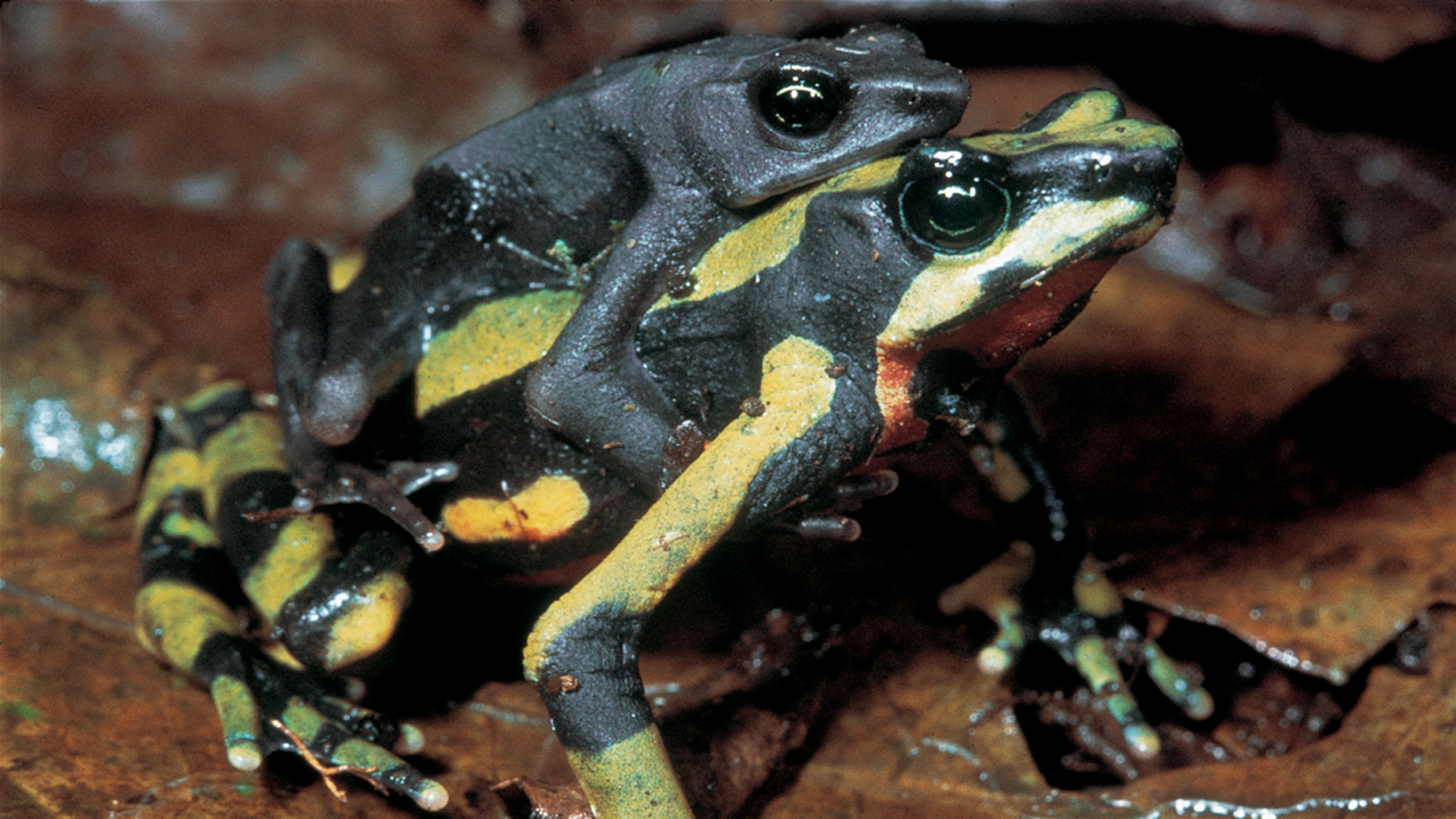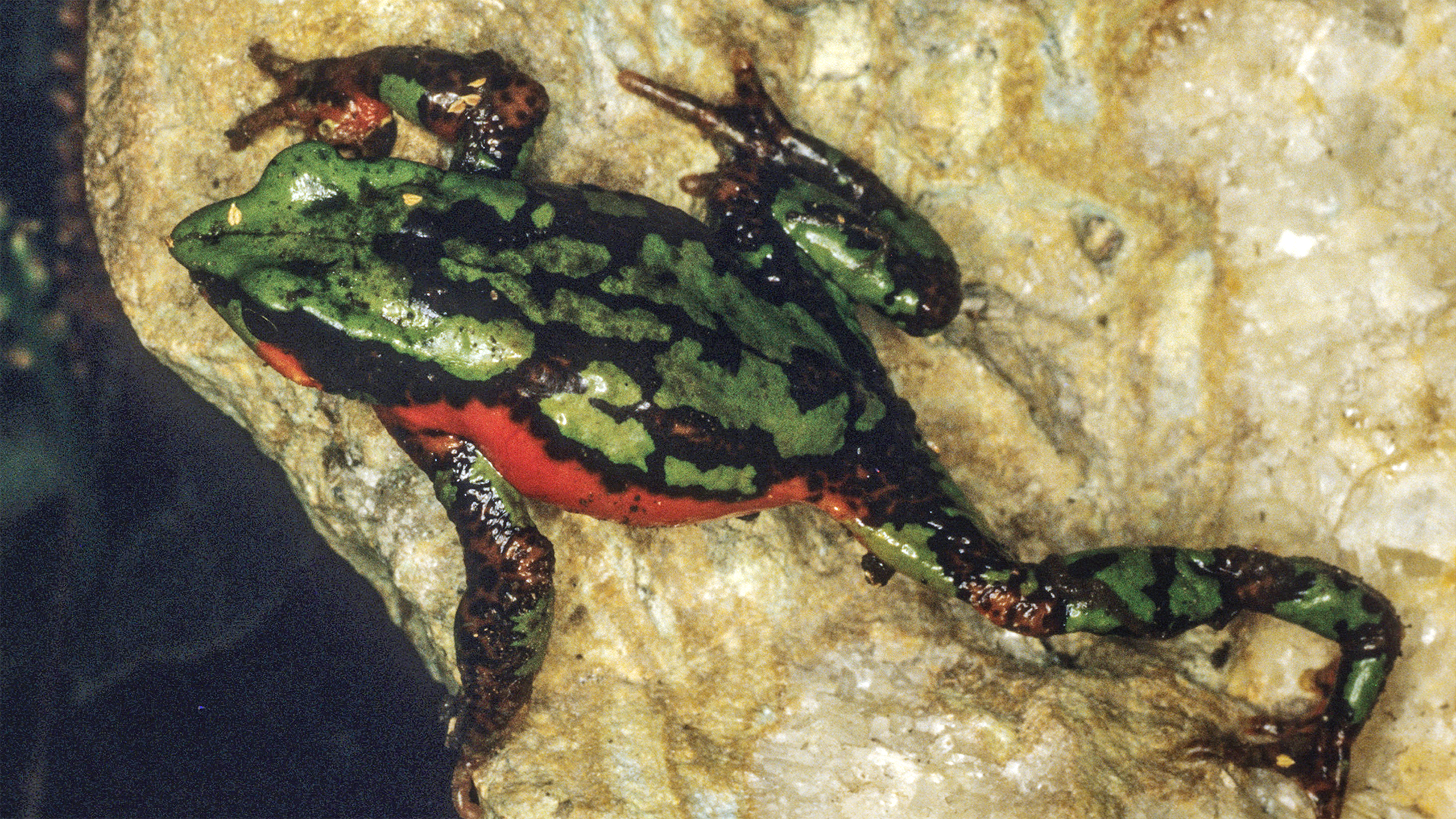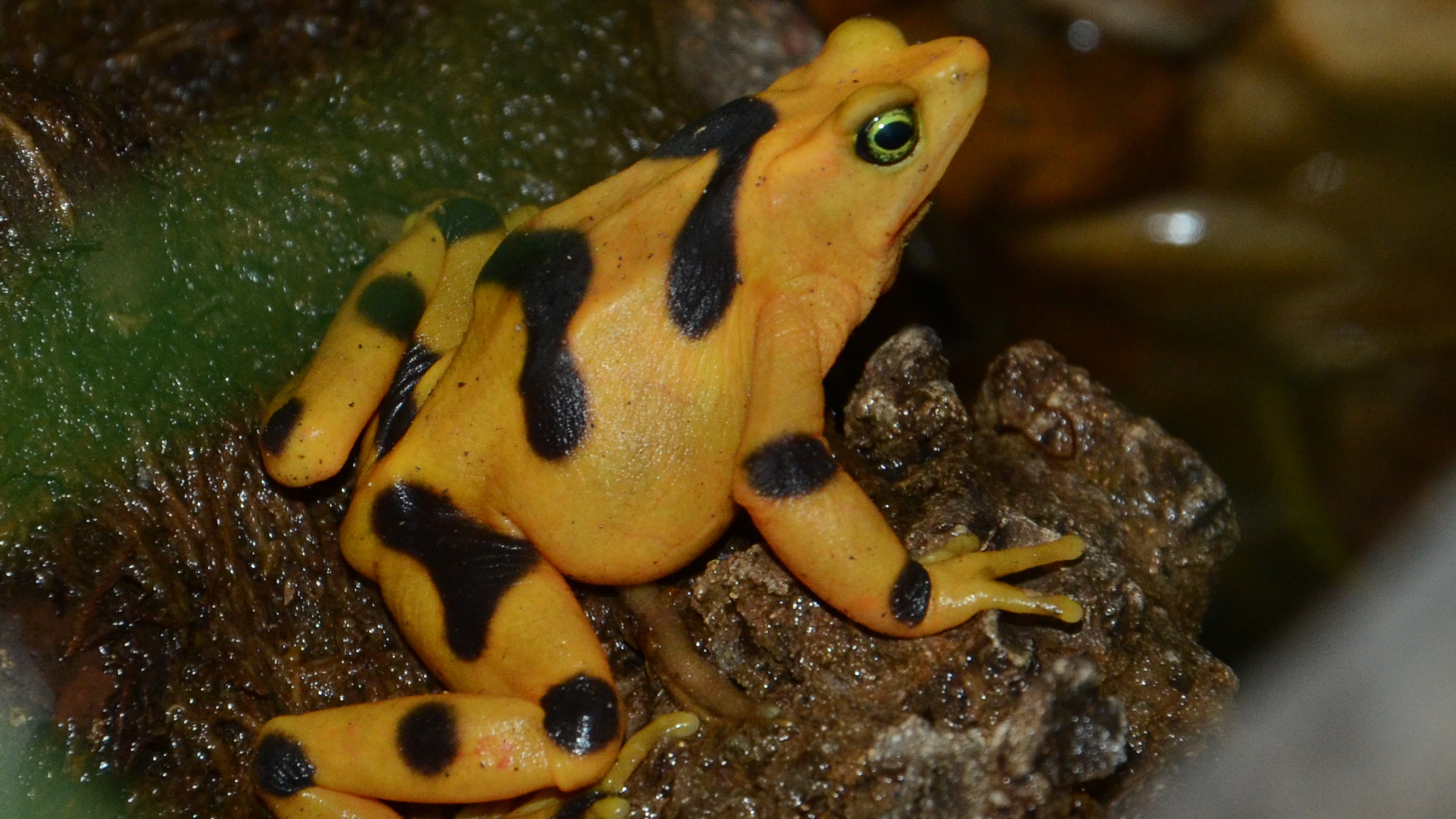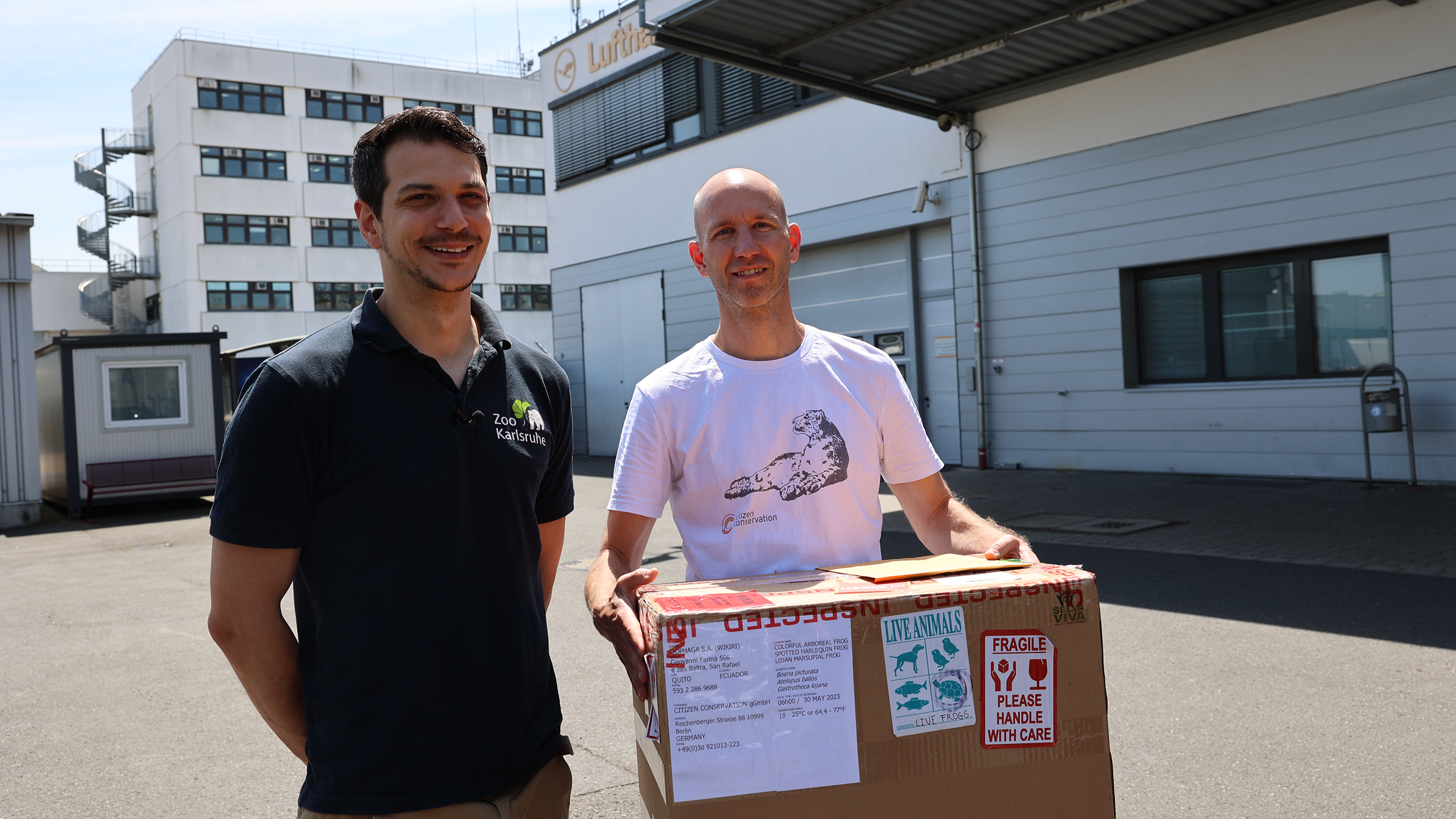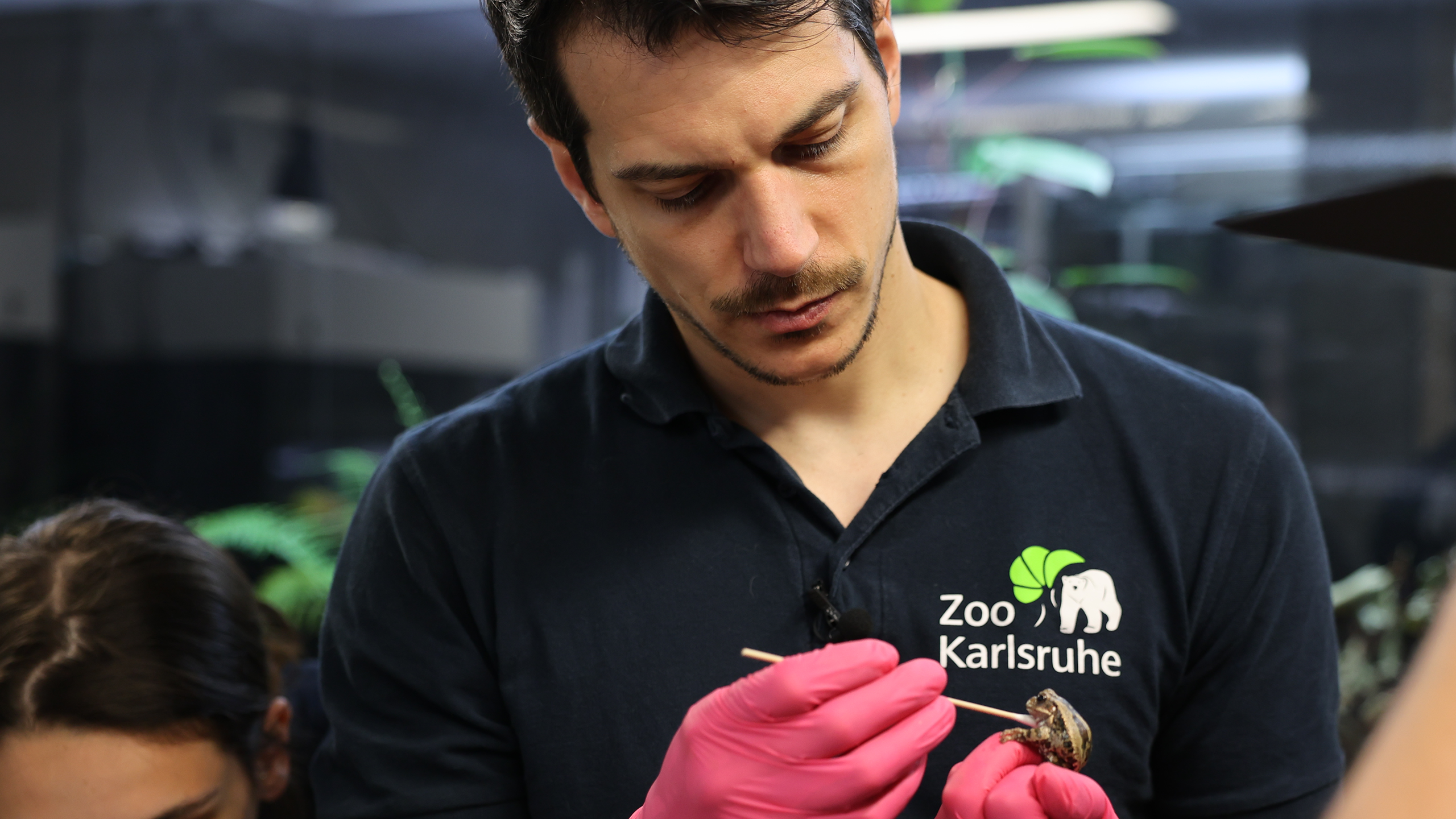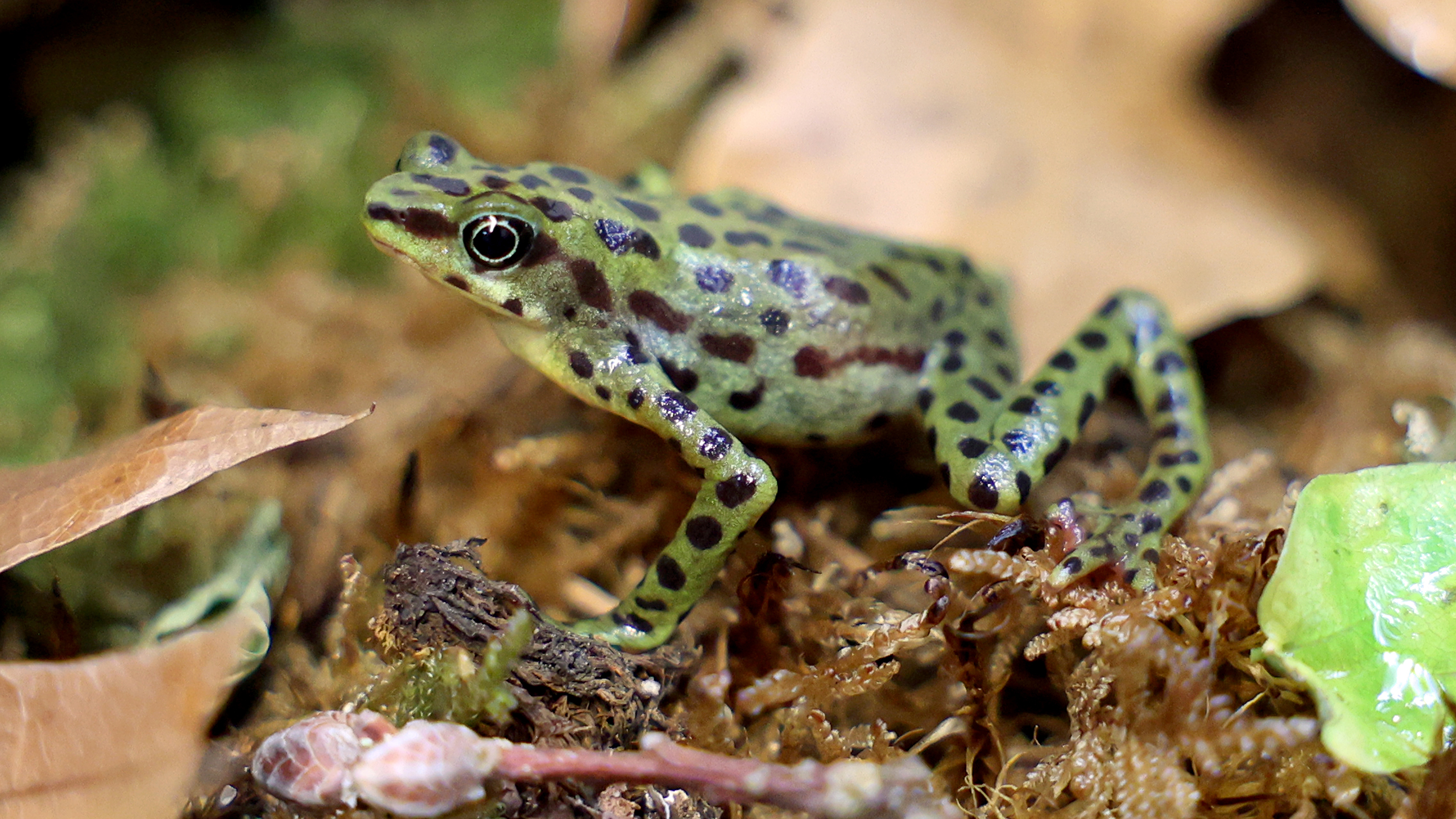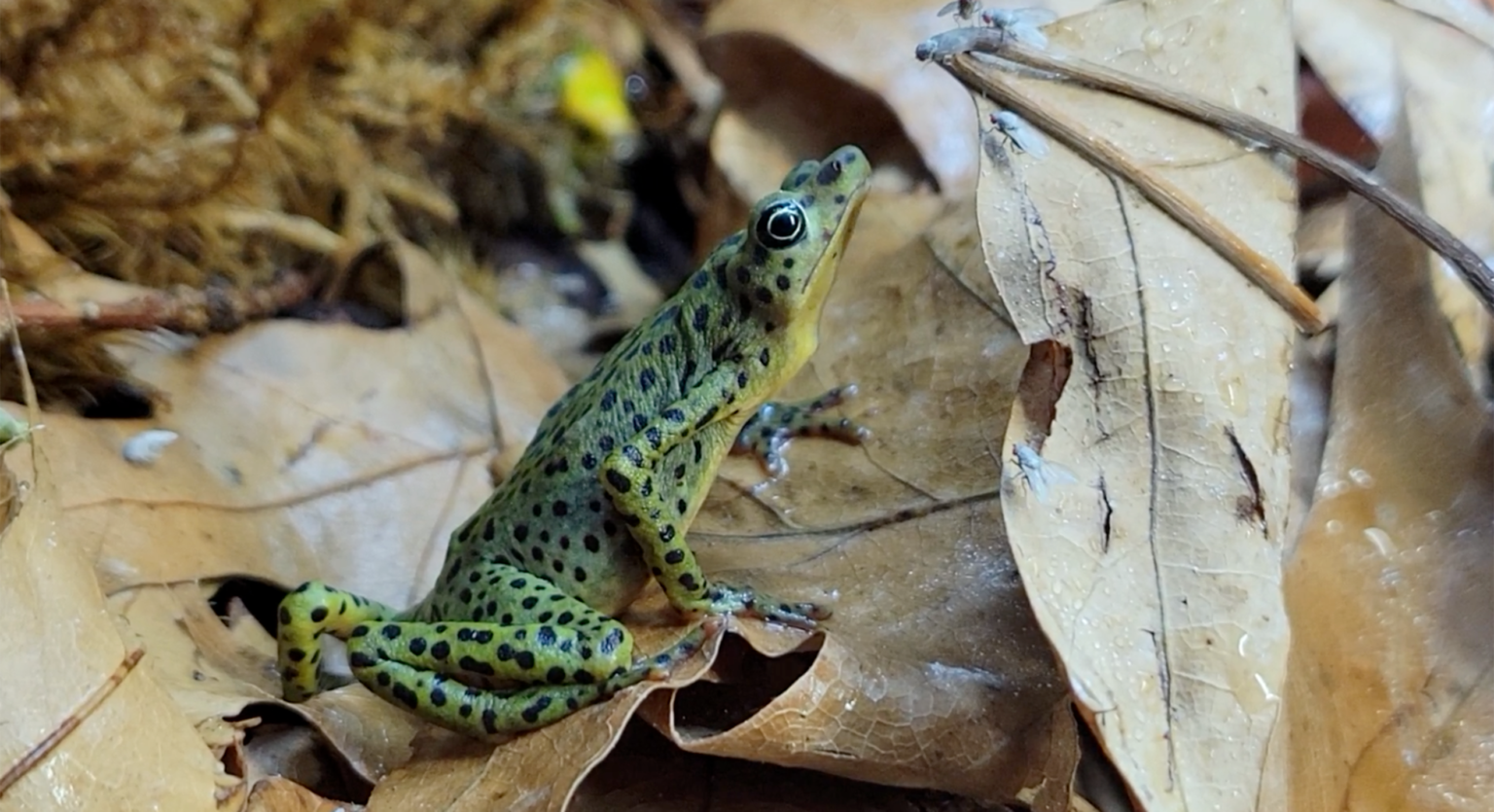Rio Pescado Harlequin Toad
Atelopus balios
Rio Pescado Harlequin Toad
Atelopus balios
CC goal
32 breeders
Status 11/2025
CC goal
225 animals
Status 11/2025
CC goal
32 breeders
Status 11/2025
CC goal
225 animals
Status 11/2025
It was spooky, like something out of a mystery shocker. In the 1980s, frogs suddenly disappeared in very different places around the world. Practically right under the eyes of biologists and conservationists. In Costa Rica. In Australia. In South America. One species after another experienced dramatic collapses or died out in a few years, for no apparent reason, sometimes in pristine natural areas.
Toad Sematary
Nasty mixture: fungus and deforestation
But it was not a supernatural force that caused the amphibian crisis, but a fungus. What exactly happened, why and how it could suddenly appear on several continents and unleash its deadly effect is still not clear. Presumably, it was carried off by humans, to areas where it was previously unknown. And it encountered frogs and toads that were defenseless in the face of the new pathogen – and that were already weakened by environmental pollution, climate anomalies and habitat destruction.
From Quito to Karlsruhe
Worst case stubfoot toads
One group that has been particularly hard hit is the approximately 130 stub-footed or harlequin toads of the genus Atelopus. Dozens of species of the pretty, small, often spectacularly colorful toads suffered dramatic losses or died out altogether. We do not know why they are so susceptible to the disease. The fungus affects different species very differently. It has a particularly devastating effect on stubby-footed toads. But that is not their only problem. The toads, which often only have a small distribution, also suffer greatly from deforestation and the consequences of agriculture and human settlement.
They were already considered probably extinct. Then in 2010 the relieving news: Some animals had survived.
© Amadeus Plewnia
It is back
The Rio Pescado harlequin toad, found in only a few localities in the southwestern rainforests of Ecuador, was considered one of the victims of the amphibian crisis. In 1995, the greenish-yellow toads with the pretty spotted pattern were seen for the last time, then they disappeared. And remained so despite an intensive search. They were already considered probably extinct, when in 2010 the relieving news came: Some animals had survived. They were finally rediscovered at three locations in the rainforest.
Traveling makes hungry
The Rio Pescado stumpy-footed toads, freshly arrived at Karlsruhe Zoo for Citizen Conservation, first fill their bellies – relaxed stumpy-footed toad style. © Lukas Reese
A new hope
But there is no reason to sound the all-clear. According to a recent study, populations are continuing to decline. The remaining habitat is threatened by deforestation. That is why Ecuadorian researchers have taken the initiative and transferred the little beauties into human care. At the “Centro Jambatu de Investigación y Conservación de Anfibios” in Quito, the animals were brought to safety and bred in terrariums. From here, a conservation breeding network is now being established in various locations, in Ecuador, in the USA and also in Europe. Citizen Conservation is involved – because we must not lose these fantastic amphibian gems again!
For breeders
Basic information on biology and breeding
The toad grows 3-4 cm long, lives at the bottom of the tropical rainforest near the stream. For the care of 2-5 animals well planted rainforest terrarium (eg 60 x 50 x 60 cm) with hiding places. During the day 24-27 °C, at night 21-24 °C. Small food like fruit flies, springtails, crickets etc. Flow-through spawning tank and well ventilated aquarium required for larval rearing.
